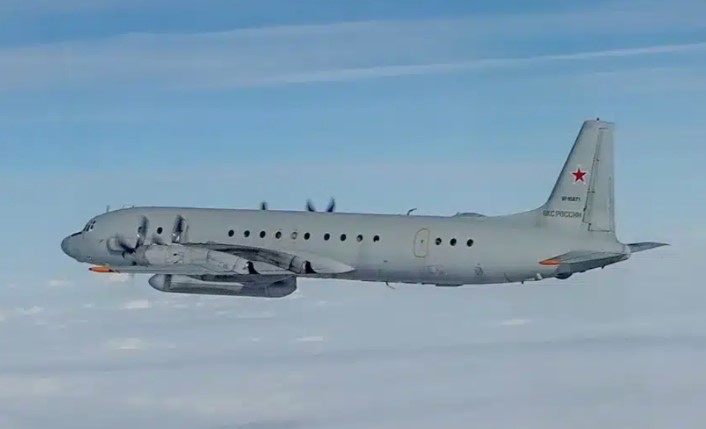Earlier this week, NATO fighter jets were urgently launched to intercept a Russian military aircraft flying near the Baltic region.
NATO Aircraft Scrambled in Urgent Mission
The aircraft involved was a Russian Il-20M, which did not follow international flying rules as it passed through the area. This situation led to a quick reaction from NATO forces. Two different air policing detachments from the United Kingdom and Portugal responded together for the very first time in this year’s NATO mission known as Operation Enhanced Air Policing 2025.
NATO’s air operations center in Germany was the one to sound the alarm. This center keeps an eye on air movements in the region 24/7. Once the unidentified Russian aircraft was detected behaving in an unusual and unsafe way, the center immediately ordered jets to take off. The goal was to ensure that the skies over the Baltic remained safe and secure.
UK fighter jets, known as Typhoons, launched from their base in Malbork, Poland. Concurrently, Portuguese F-16 fighter aircraft departed from Estonia’s Ämari Air Base. Both groups of jets quickly headed toward the Russian plane, coordinating their movements to intercept it safely and professionally.
Power Play Turns Toxic: U.S. Deploys F-16 Jets to Taiwan and Philippines, China Issues Stark Warning
Importance of the Air Policing Mission
The air mission that took place is part of NATO’s ongoing effort to monitor and protect the skies over the Baltic Sea region. This part of the world is very close to Russia, and tensions have been rising due to various military activities. For this reason, NATO has kept its air policing efforts very active and well-prepared. These missions are carried out even when there is no conflict, in order to prevent accidents and make sure all aircraft follow international safety rules.
This particular interception marked a milestone. It was the first time that the current UK and Portuguese air policing teams worked together in a real interception under Operation Enhanced Air Policing 2025. The operation aims to strengthen the security of NATO’s eastern borders by having fighter jets ready to respond quickly in case of any unusual or unsafe activity in the air.
The Russian Il-20M aircraft that was intercepted is known for carrying special radar and surveillance equipment. When this plane flew over international airspace near the Baltic but failed to follow international flight procedures, it posed a potential risk to civil and military aircraft in the region. The NATO jets made sure it was identified and safely escorted away without causing any harm.
Portugal’s Powerful F-16 Jets Replace Costly Dutch F-35s in NATO Baltic Skies Realignment
Sweden Joins NATO’s Baltic Air Defense Effort
In a separate development connected to the ongoing air policing mission, Sweden is also preparing to contribute. Sweden will deploy 150 military troops and up to eight Gripen fighter jets to Poland between May and August. These Swedish forces will support NATO’s overall air defense efforts and provide additional backup in case similar situations arise.
This shows the growing cooperation between different countries within NATO, all working together to keep the airspace safe for everyone. By placing jets and trained personnel in different parts of the Baltic region, NATO ensures that any unidentified or unsafe aircraft can be intercepted quickly, no matter where it appears.
The operation is designed to cover the skies of Estonia, Latvia, and Lithuania—three countries in the alliance that do not have their own fighter jets. Member nations take turns sending their jets and crews to protect these areas as part of a rotating mission. This system helps share duties and ensures the region stays protected at all times.
Sweden Deploys Powerful JAS-39 Gripen Fighters to Shield NATO Borders Amid Rising Russian Threats
Thanks to these efforts, NATO can react fast when a situation arises. The recent joint mission by UK and Portuguese jets proves that the system works. It also shows that pilots from different countries are able to train, prepare, and act together during real situations, even under pressure.
This latest interception mission is a reminder of how important it is for NATO countries to work closely together, especially in areas close to other large military powers. With constant monitoring, rapid response teams, and international cooperation, NATO continues to keep the skies over the Baltic region safe for both military and civilian aircraft.

